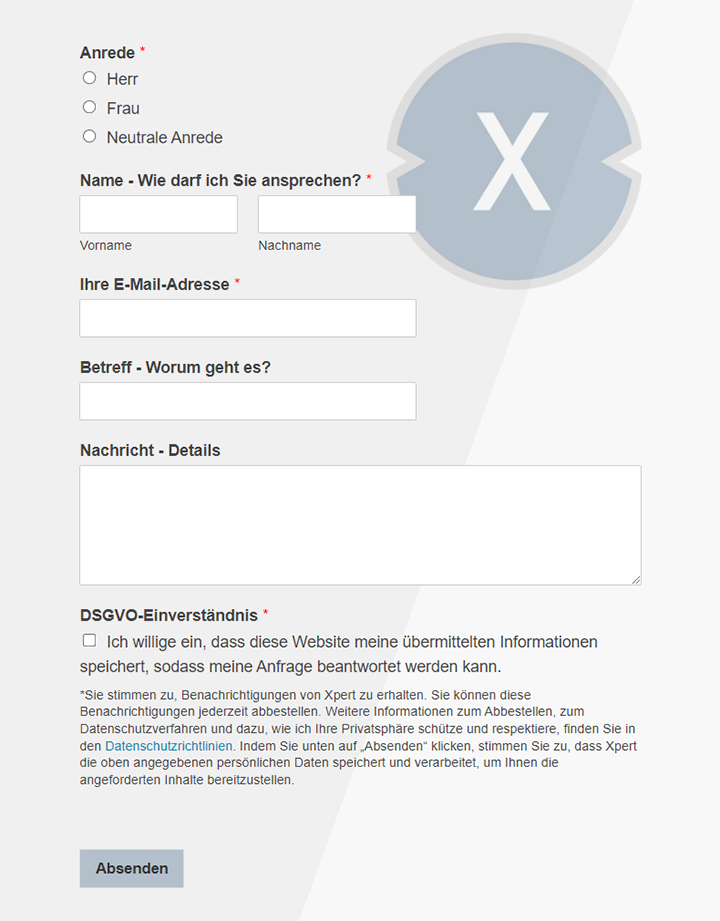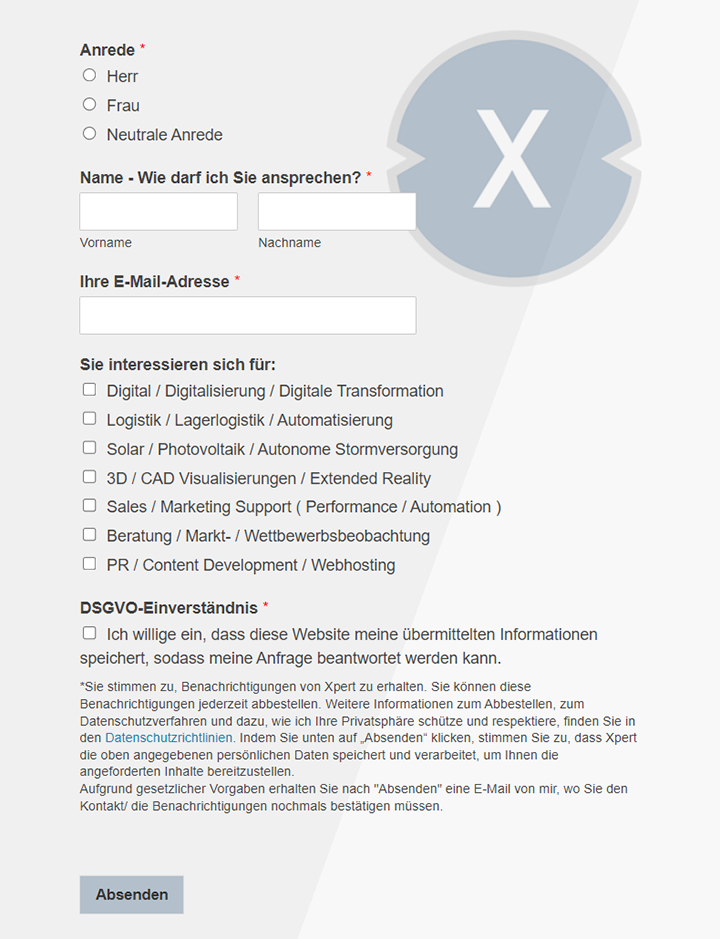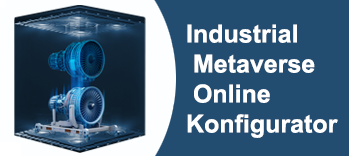DeepSeek V3.1 – Alarm for OpenAI & Co: Chinese open-source AI poses new challenges for established providers
Xpert pre-release
Language selection 📢
Published on: August 21, 2025 / Updated on: August 21, 2025 – Author: Konrad Wolfenstein

DeepSeek V3.1 – Alarm for OpenAI & Co: Chinese open-source AI presents established providers with new challenges – Image: Xpert.Digital
New AI model from China: This free model is 27 times cheaper and directly challenges ChatGPT
### Alarm for OpenAI & Co: China's new AI is just as powerful – but dirt cheap. What's behind it? ### DeepSeek V3.1: The silent AI attack that's now turning the tech world upside down ### Forget expensive AI: Why this Chinese open-source model is changing everything ### China's new super AI: How Beijing is putting pressure on the West with a radical free strategy ### Better and cheaper than the competition? What China's new miracle AI can really do ###
DeepSeek V3.1 revolutionizes the AI landscape (once again)
Chinese artificial intelligence is emerging as a serious challenge for American tech giants. Hangzhou-based startup DeepSeek has achieved a significant breakthrough with its latest model, V3.1, fundamentally challenging traditional assumptions about AI development and funding. The open-source model achieves the performance of leading proprietary systems at a fraction of the development cost, paving the way for the future of artificial intelligence.
Suitable for:
- Deepseek: China's AI revolution under the shadow of surveillance – severe allegations from Washington
Technical innovation with hybrid architecture
DeepSeek V3.1 is based on an advanced mixture-of-experts architecture with a total of 685 billion parameters, of which 37 billion are activated per token. This technology enables significantly more efficient resource utilization than traditional models without compromising performance.
The new model's standout feature is its hybrid inference architecture, which can switch between a "Think Mode" and a "Non-Think Mode." In Think Mode, the system develops deeper internal thought processes and is ideal for complex problem-solving that requires multi-level logical reasoning. Non-Think Mode, on the other hand, delivers direct and concise answers for tasks where speed is critical.
Another technical advancement is the expanded context window of 128,000 tokens, equivalent to approximately 96,000 words or two 200-page novels. This capacity enables the processing of extremely long documents, the understanding of entire code repositories, and multi-step dialog scenarios.
The further development was achieved through a two-phase context expansion approach. The 32,000-token phase was expanded tenfold to 630 billion tokens, while the 128,000-token phase was expanded 3.3fold to 209 billion tokens. Additionally, the model uses the UE8M0 FP8 data format for optimal compatibility with modern hardware architectures.
Impressive performance parameters and benchmarks
In standardized tests, DeepSeek V3.1 achieves remarkable results. On the renowned Aider coding benchmark, the model achieved a score of 71.6 percent – a score that rivals the leading models from OpenAI and Anthropic. This performance is particularly impressive given that it is achieved at a significantly lower cost.
In mathematical tasks, DeepSeek V3.1 even outperforms established competitors. In the Math 500 test, the model achieved 90.2 percent, while GPT-4o only managed 74.6 percent. In the MMLU-Pro test, the system improved by 5.3 points to 81.2, and in the GPQA benchmark, it achieved a remarkable 9.3 points to 68.4.
Particularly noteworthy is the improvement in multi-step reasoning tasks, where V3.1 performs 43 percent better than its predecessor. The model's programming capabilities allow it to create error-free code up to 700 lines long – a performance that rivals expensive proprietary solutions.
Revolutionary cost efficiency
The cost structure of DeepSeek V3.1 turns previous assumptions about AI development on its head. While a programming task with V3.1 costs about one dollar, comparable systems charge almost 70 dollars for similar tasks. This dramatic cost reduction makes advanced AI technology accessible to smaller companies and developers.
According to the company, the development costs of the underlying V3 model were only approximately $5.6 million – a fraction of the hundreds of millions of dollars spent by American companies on comparable projects. This efficiency was achieved through innovative training methods and the use of less powerful but more cost-effective hardware.
DeepSeek's API pricing massively undercuts the competition. The chat model costs $0.07 per million input tokens with cache hits and $1.10 per million output tokens. The reasoning model costs $0.14 per input token and $2.19 per output token. In comparison, OpenAI charges around $2 to $2.50 per million output tokens, while DeepSeek's price is $0.014.
Strategic importance for global AI competition
DeepSeek's successes have far-reaching implications for the global AI landscape. The company demonstrates that advanced AI performance no longer requires the massive resources and proprietary approaches that have characterized American AI development to date. This development challenges the foundations of current business models.
China's leadership attaches great strategic importance to DeepSeek, as demonstrated by the reception given to founder Liang Wenfeng by Premier Li Qiang. The company is seen as a key building block in China's ambitions to become a global leader in artificial intelligence by 2030.
DeepSeek's open-source strategy enables other companies and researchers worldwide to build on its progress and develop their own innovations. This promotes decentralized development of AI technology and reduces dependence on individual tech giants.
Background and company structure
DeepSeek was founded in Hangzhou in 2023 by Liang Wenfeng and is fully funded by the Chinese hedge fund High-Flyer. Wenfeng, born in 1985 as the son of an elementary school teacher, developed an interest in the application of AI in the financial sector while studying at Zhejiang University.
In 2016, Wenfeng founded High-Flyer, a hedge fund that uses machine learning for quantitative trading strategies. By 2021, the company had fully transitioned to AI-powered trading approaches and developed into one of China's leading quant funds with over 100 billion RMB in assets under management.
Even before founding DeepSeek, Wenfeng began purchasing thousands of Nvidia GPUs – initially ridiculed as a billionaire's eccentric hobby. This far-sighted investment in hardware later enabled the company to develop competitive AI models despite US export restrictions.
EU/DE Data Security | Integration of an independent and cross-data source AI platform for all business needs
Ki-Gamechanger: The most flexible AI platform – tailor-made solutions that reduce costs, improve their decisions and increase efficiency
Independent AI platform: Integrates all relevant company data sources
- Fast AI integration: tailor-made AI solutions for companies in hours or days instead of months
- Flexible infrastructure: cloud-based or hosting in your own data center (Germany, Europe, free choice of location)
- Highest data security: Use in law firms is the safe evidence
- Use across a wide variety of company data sources
- Choice of your own or various AI models (DE, EU, USA, CN)
More about it here:
Chips, algorithms, innovation: DeepSeek's path to world leadership
Impact of US export controls
DeepSeek's success is particularly remarkable given the US export restrictions on powerful AI chips to China. While the sanctions were intended to limit China's ability to develop advanced AI systems, DeepSeek demonstrates that innovative software approaches and efficient use of resources can overcome these limitations.
The company used less powerful H800 chips approved for export to China, but still achieved top performance through optimized algorithms and efficient training methods. This approach questions the effectiveness of technological sanctions and highlights alternative paths to AI development.
Experts see DeepSeek's breakthrough as a turning point that could fundamentally change existing estimates of China's AI capabilities and potential. The development suggests that innovations in software optimization may be more important than pure hardware superiority.
Suitable for:
Open source as a competitive advantage
DeepSeek's open-source strategy offers several strategic advantages. Developers and companies worldwide can run the model locally, customize it, and integrate it into their own projects without relying on cloud services. This is especially important for data-sensitive applications and companies that want to maintain control over their information.
Community-based development enables faster bug fixing, continuous improvements, and a broad contributor base. At the same time, the open-source approach democratizes access to advanced AI technology and promotes innovation, even among smaller companies and in developing countries.
Unlike proprietary models that are only accessible via APIs or cloud platforms, open-source AI offers long-term availability and independence from individual providers. Users don't have to worry about price increases, access restrictions, or service discontinuation.
Technological breakthroughs and innovations
DeepSeek V3.1 integrates several groundbreaking technologies that enable its exceptional efficiency. The multi-head latent attention architecture compresses key-value caches using latent vectors, reducing memory consumption and computational overhead during inference.
The multi-token prediction method allows each token to predict multiple future tokens simultaneously. This overcomes a significant bottleneck of traditional autoregressive models and improves both accuracy and inference speed.
Using 8-bit training significantly reduces memory requirements and costs without compromising accuracy. This technique has long been considered problematic, but DeepSeek shows that, when implemented correctly, it leads to results comparable to conventional methods.
Market reactions and impacts
The announcement of DeepSeek V3.1 triggered strong reactions in the financial markets. Nvidia lost over $600 billion in market capitalization – the largest single loss in the history of the US stock market. Other AI hardware companies also recorded significant share price declines.
Investors and analysts are rethinking their assessments of the AI industry. DeepSeek's success is challenging the assumption that massive investments in hardware and proprietary development are necessary prerequisites for cutting-edge AI.
Western companies are already testing DeepSeek models in their workflows. One prominent example is Merck, whose Chief Data Officer publicly demonstrated the integration of DeepSeek as one of several AI options into internal processes.
Future developments and outlook
DeepSeek positions V3.1 as the first step toward the "agent era" of AI. The model has been specifically optimized for improved tool utilization and multi-step agent tasks. Post-training optimizations have led to significant improvements in the use of external tools and complex search tasks.
DeepSeek's development speed suggests that a V4 model may be released before OpenAI's next R2 release. This momentum could accelerate the AI industry's traditional development cycles and set new standards for update frequencies.
DeepSeek's successes are already inspiring other Chinese AI companies and researchers worldwide. Open-source models are increasingly viewed as a valid alternative to proprietary solutions, which could lead to a more diversified and competitive AI landscape.
Challenges and criticisms
Despite its impressive performance, DeepSeek also faces criticism. Like other Chinese AI models, DeepSeek is subject to certain censorship measures, which can be used in politically sensitive areas. However, these restrictions can often be circumvented through technical adjustments.
Transparency regarding training data and methods is limited. There is speculation that the training is partially based on responses from ChatGPT, as DeepSeek occasionally claims to be ChatGPT itself. This ambiguity raises questions about originality and potential copyright issues.
The rapid development and low price of DeepSeek models also raise concerns about the sustainability of the business model. Critics question whether the extremely low prices can be sustained in the long term or whether they are part of a strategic market penetration drive.
Global implications for the AI industry
DeepSeek V3.1 marks a turning point in global AI development. The model proves that innovative software approaches and efficient resource utilization can be more important than massive capital investments and access to the latest hardware. This insight will influence the strategies of all major AI companies.
Democratizing advanced AI technology through open-source models could lead to a more even distribution of AI capabilities worldwide. Countries and companies previously excluded by high costs or technical barriers will gain access to cutting-edge technology.
At the same time, DeepSeek's success calls into question the effectiveness of technological sanctions and export controls. The ability to achieve world-class performance with limited resources could encourage other countries to pursue similar approaches and develop their own AI ecosystems.
DeepSeek V3.1 represents more than just another AI model – it symbolizes a fundamental shift in the way AI is developed, funded, and disseminated. The combination of technical innovation, cost-effective development, and open-source availability creates new opportunities and poses serious challenges to established market leaders. Further developments will show whether this approach will shape the future of the AI industry.
We are there for you – advice – planning – implementation – project management
☑️ SME support in strategy, consulting, planning and implementation
☑️ Creation or realignment of the AI strategy
☑️ Pioneer Business Development
I would be happy to serve as your personal advisor.
You can contact me by filling out the contact form below or simply call me on +49 89 89 674 804 (Munich) .
I'm looking forward to our joint project.
Xpert.digital – Konrad Wolfenstein
Xpert.Digital is a hub for industry with a focus on digitalization, mechanical engineering, logistics/intralogistics and photovoltaics.
With our 360° business development solution, we support well-known companies from new business to after sales.
Market intelligence, smarketing, marketing automation, content development, PR, mail campaigns, personalized social media and lead nurturing are part of our digital tools.
You can find more at: www.xpert.digital – www.xpert.solar – www.xpert.plus

























